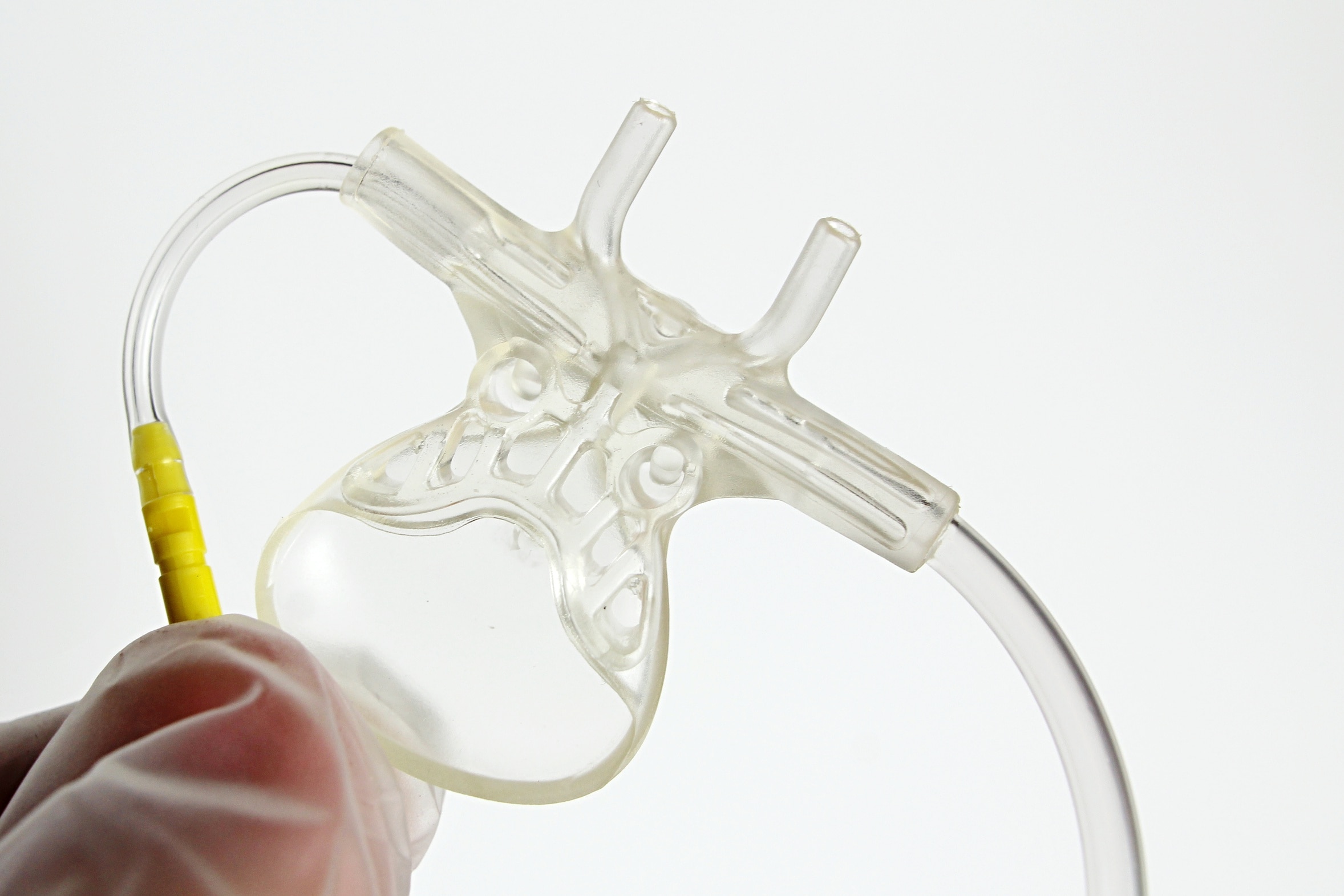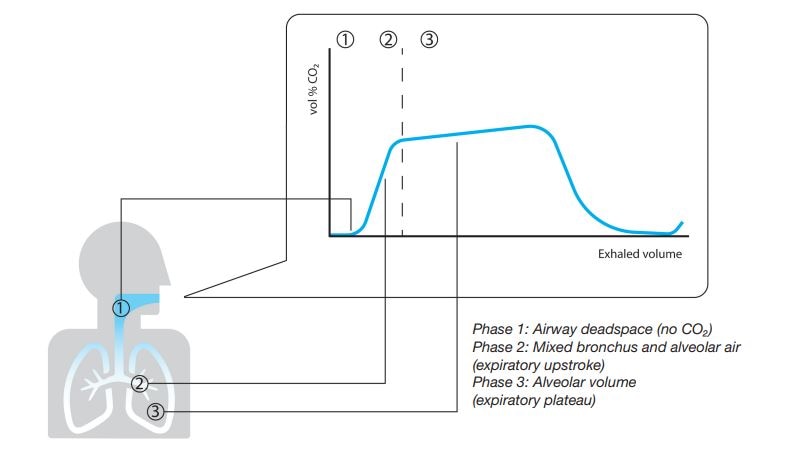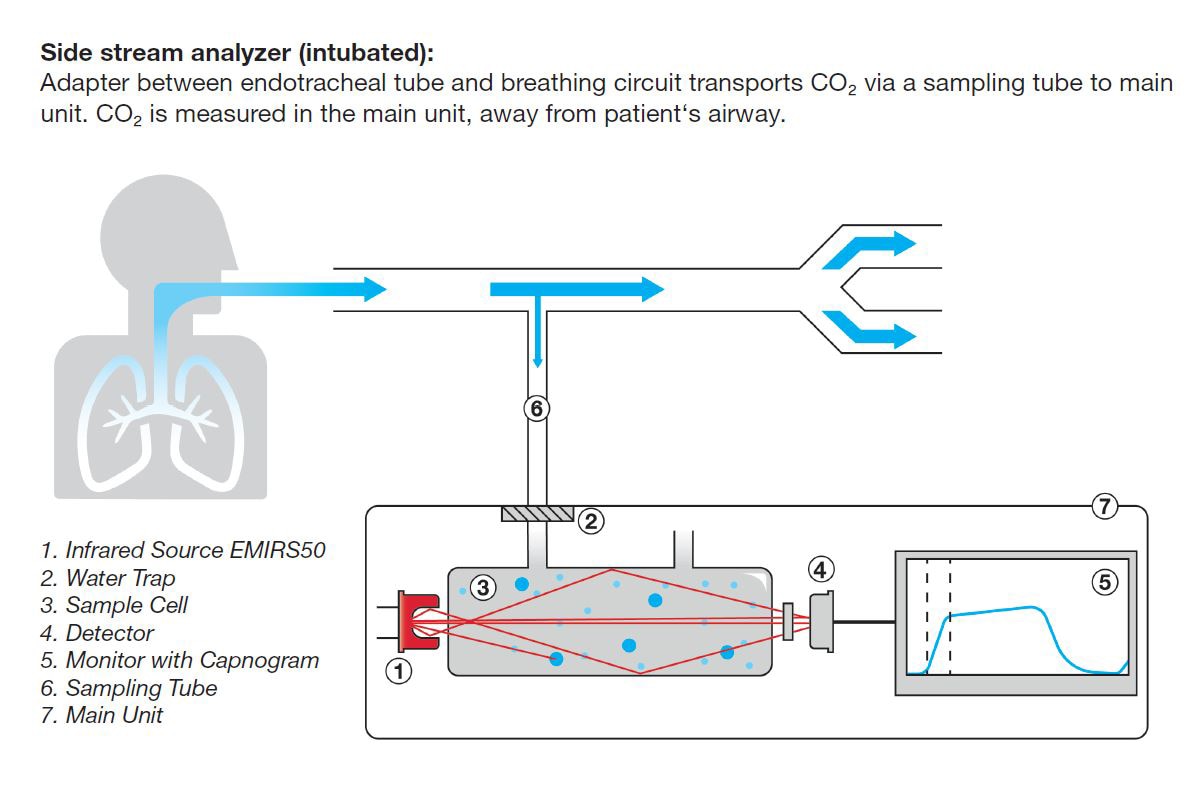

The mixing of gas from the anatomical dead space and CO₂-containing air from the alveoli in phase 2 causes an expiratory upstroke. The alveolar plateau of phase 3 represents the expiration of predominantly alveolar air. At the end of exhalation, the peak CO₂ concentration, the end-tidal value, is measured. As soon as inspiration begins, a rapid and sharp inspiratory downstroke follows. The amount of CO₂ during a respiratory cycle provides important information about the patient's health status. EtCO₂, the amount of carbon dioxide released at the end of exhalation, provides information about respiratory effort. The waveform can provide information about possible medical problems such as airway obstruction, partial rebreathing, and hypo- or hyperventilation.

The Axetris EMRIS50 features high emission efficiency at the 4.26 μm wavelength that is important for CO₂ measurement, approaching a blackbody characteristic. The specific wavelengths required to measure the gas(es) of interest are thereby selected with narrow bandpass filters. The radiation at this wavelength is then absorbed by the gas. This results in a decrease in signal that is proportional to the concentration of the gas in the sample volume. To obtain useful data from a capnogram, it is important to acquire 30 to 100 measurement points per second. For this reason, a reliable IR emitter with high frequency is required. With the EMIRS50, Axetris offers an infrared source with remarkably fast electrical modulation rates and a high modulation depth of over 60% at 100Hz.

Sidestream analyzers use only a small sample of the respiratory gases. Weight is crucial for sensor modules in mainstream analyzers, since the sensor is placed directly on the breathing tube. Reducing the weight of the sensor module thus directly improves patient comfort. The EMIRS50, developed specifically for this purpose, is characterized by a particularly small size, low power consumption and high modulation depth. Since these properties are generally advantageous for capnography, the EMIRS50 can also be used for sidestream.

The high resolution measurement of the CO₂ concentration requires a high sampling rate. Therefore, the emitter should be able to operate at high modulation frequency with a minimal loss of amplitude. A rapid response CO₂ sensor improves patients' safety and requires reliable components including infrared sources. Axetris‘ EMIRS50 is designed for medical applications such as capnography. Its characteristics meet the demands of medical device manufactures. EMIRS50‘s high emission at 4.26μm makes it the first choice when it comes to integrating it in main- or sidestream devices.
Its compact size and low weight are particularly advantageous in mainstream analyzers. In addition, Axetris' integrated beam shaping improves the efficiency significantly. Combining the EMIRS50 and optimized reflectors provides highly reliable equipment.